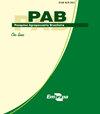Morphological traits of 'Granada' peach nursery trees from rootstocks of two production systems
IF 0.7
4区 农林科学
Q3 AGRICULTURE, MULTIDISCIPLINARY
引用次数: 0
Abstract
Abstract The objective of this work was to evaluate the effect of the use of rootstocks from clonal and seed production systems on the morphology of nursery peach trees of cultivar Granada. The experiment was carried out in a completely randomized design with five treatments ('Granada' scion grafted onto five rootstocks) and five replicates. The rootstocks from clonal production were the 'Okinawa' peach plant and the GKM-ELD-10-70, EF-SAU-10-78, and EF-SAU-10-87 peach genotypes kept in pots. The rootstocks from the seed production system came from peach seed of some scion varieties (mixed pits) used for canning production and propagated in a nursery field system. Shoot and root morphological variables were evaluated. The rootstock production system did not affect root volume. However, the nursery trees of the clonal rootstocks system kept in pots showed a higher percentage of water in the roots. The clonal rootstocks in the potted system do not affect most of the morphological traits of 'Granada' peach nursery trees; however, they induce a homogeneous root system and delay leaf abscission, besides not requiring root pruning.“格拉纳达”桃树苗木两种生产体系的形态特征
摘要本研究旨在评价克隆生产体系和种子生产体系的砧木使用对格拉纳达桃树苗木形态的影响。试验采用完全随机设计,5个处理(‘格拉纳达’接穗接在5根砧木上),5个重复。无性系生产的砧木为“冲绳”桃植株和盆栽保存的gkm - ld -10-70、ef - su -10-78和ef - su -10-87桃基因型。制种系统的砧木来自于一些用于罐头生产的接穗品种(混合坑)的桃种子,并在苗圃系统中繁殖。对茎和根的形态变量进行了评价。砧木生产系统对根体积没有影响。而盆栽无性系砧木体系的苗木根系水分含量较高。盆栽体系中的无性系砧木对格拉纳达桃树苗木的大部分形态性状没有影响;然而,除了不需要根修剪外,它们还能诱导均匀的根系并延缓叶片脱落。
本文章由计算机程序翻译,如有差异,请以英文原文为准。
求助全文
约1分钟内获得全文
求助全文
来源期刊

Pesquisa Agropecuaria Brasileira
农林科学-农业综合
CiteScore
1.20
自引率
0.00%
发文量
45
审稿时长
9-18 weeks
期刊介绍:
Pesquisa Agropecuária Brasileira – PAB – is issued monthly by Empresa Brasileira de Pesquisa Agropecuária – EMBRAPA, affiliated to Ministry of Agriculture, Livestock and Food Supply. PAB publishes original scientific-technological articles on Plant Physiology, Plant Pathology, Crop Science, Genetics, Soil Science, Food Technology and Animal Science.
Its abbreviated title is Pesq. agropec. bras., and it should be used in bibliographies, footnotes, references and bibliographic strips.
 求助内容:
求助内容: 应助结果提醒方式:
应助结果提醒方式:


